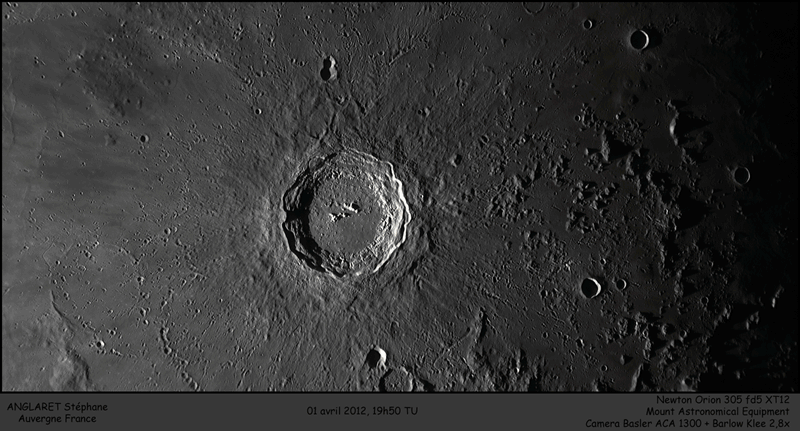April 23, 2012
Technicolor

images : Stéphane Anglaret, Clermont-Ferrand, France
Stéphane used an original technique to obtain color images of the Moon. He has combined old pre-digital color negatives and recent b/w digital images taken during the last lunation. Because libration was obviously different, he had to apply some geometric transformation to the color images to make them match the b/w ones. Accuracy of the result was assessed by comparing them to the color maps obtained by Clementine. Stéphane points out that, as strange as they may appear at first sight, the observed colors are indeed related to physical differences in the mineralogy of the surface and the history of the Moon. In short, the two most salient colors are the signature of titanium (blue) and iron (red). Some faint yellow and red traces witness the presence of pyroxene and olivine. The blue halo bordering young craters is probably due by titanium-rich material excavated by the impact. This also explains why some ejecta exhibit a blueish color. Difference in relative concentration for iron and titanium is also related to the age of the formations. Lunar highlands are made in majority from anorthosite, red for the oldest (4.5 BY) or blue for the yougest. From 3-9 to 1 BY, lunar maria have formed from basalt-rich material, with varying concentration of titanium, explaining the variation in color: yellow/orange for low ti and blue for high ti.
Jocelyn Sérot
CAW note: This is a first. The same image and text will appear on both the French and English versions of LPOD on the same day. Thanks to Jocelyn for thinking of it and carrying it out!
Technical Details
1/4/2012, 19h50 TU, caméra Basler 1300 sur T300 (OrionXT12) sur monture Astronomical Equipment, Barlow 2,8x.
Related Links
Rükl plate 31
More of Stéphane's images
Yesterday's LPOD: Spiky Moon
Tomorrow's LPOD: Tomorrow's Bridge, Yesterday's Moon
COMMENTS?
Register, Log in, and join in the comments.



